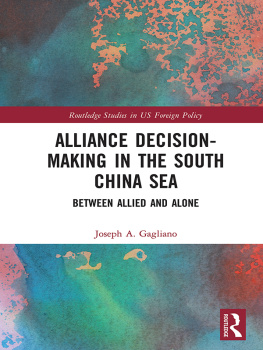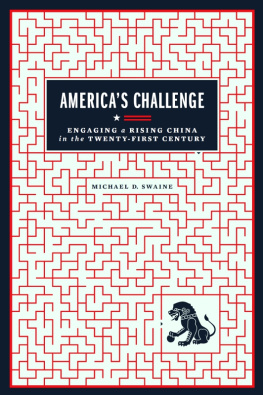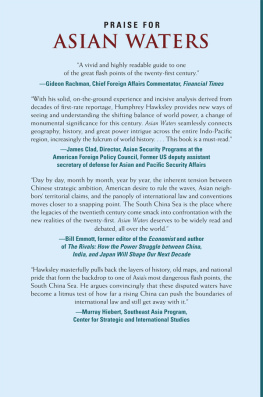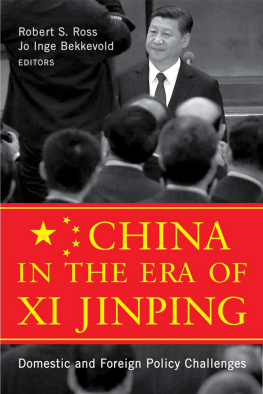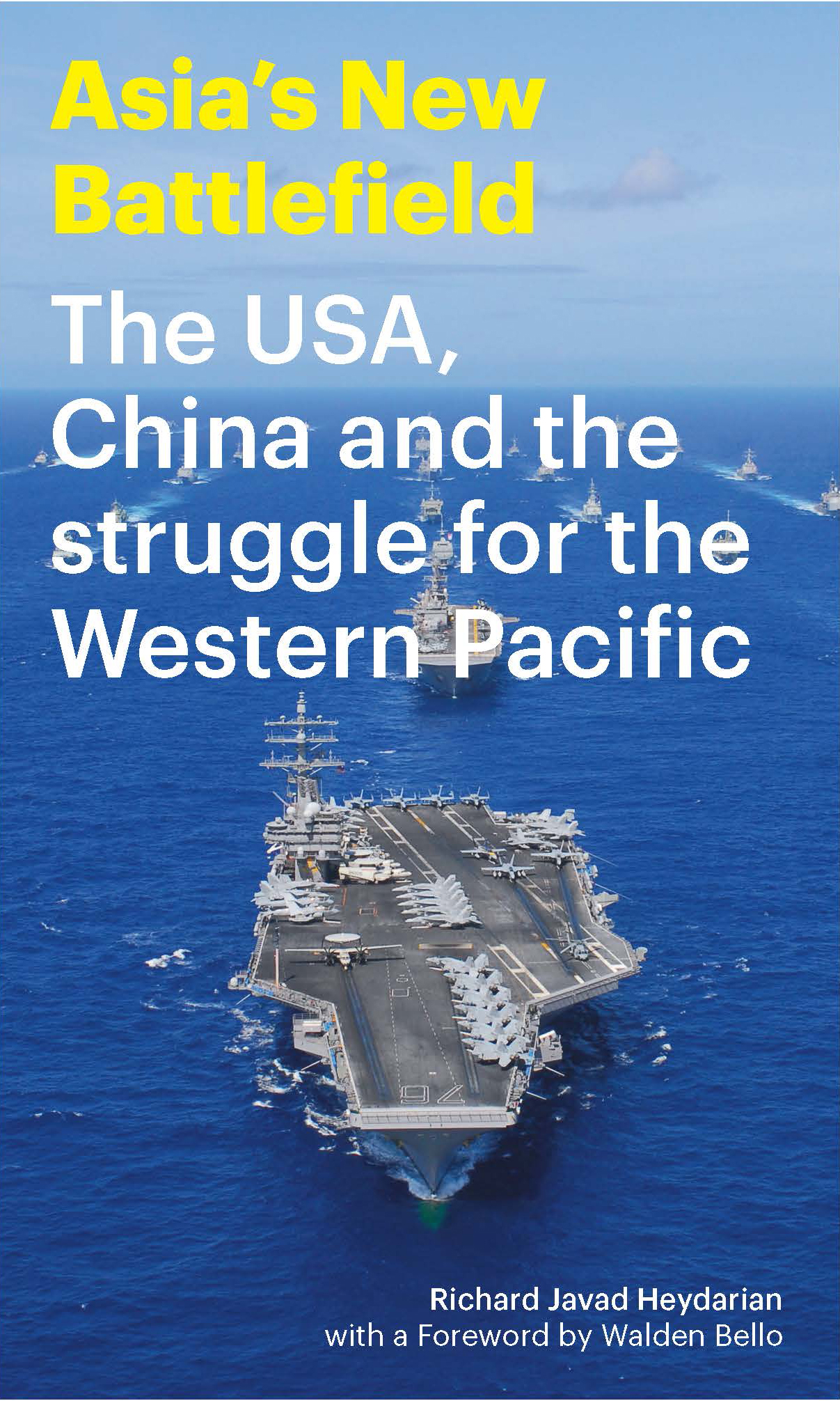More praise for Asias New Battlefield
Combining lucid analysis with rich data and elegant prose, Heydarians book provides a tour dhorizon of the central dynamics that are shaping Asias strategic landscape. A must-read for anyone who is interested in the future of Asia.
Alexander Vuving, Asia-Pacific Center for Security Studies
A valuable source for policy makers, academics, researchers and those who would like to understand the dynamics among the powers in Southeast Asia and the possible dangers that might arise.
Wilfrido Villacorta, former Philippine ambassador and permanent representative to ASEAN
About the author
Richard Javad Heydarian is an assistant professor in political science and international relations at De La Salle University, the Philippines, and served as a foreign policy adviser at the Philippine House of Representatives from 2009 to 2015. He has also been a consultant for various national and international institutions, advising on economic and foreign policy issues concerning the Philippines and East Asia. He has written for and/or been interviewed by, among other major publications, Foreign Affairs, Aljazeera, ABC, BBC, Bloomberg, CNN, The New York Times, The Financial Times, The Wall Street Journal, The Nation, The National Interest , and contributed to leading think tanks such as the Center for Strategic and International Studies (CSIS), S. Rajaratnam School of International Studies (RSIS), and the Norwegian Peacebuilding Resource Centre (NOREF). The Manila Bulletin , one of the Philippines leading newspapers, has described him as one of the countrys foremost foreign affairs and economic analysts. His previous works include How Capitalism Failed the Arab World: The Economic Roots and Precarious Future of the Middle East Uprisings (Zed Books, 2014).
ASIAS NEW BATTLEFIELD
The USA, China and the struggle for the Western Pacific
Richard Javad Heydarian
Foreword by Walden Bello
To my loving mother, Evangeline Pe Benito Foronda, who has always been there for me
And to my long-time mentor Walden Bello, who has been a great source of intellectual nourishment throughout the years
CONTENTS
Figures
Rising powers key economic and military indicators in their peak years |
Five rising powers share of global GDP in their peak decades |
Five rising powers share of global military spending in their peak decades |
Russias growing defence spending |
Overlapping claims in the South China Sea |
Maritime entitlements under UNCLOS |
Hydrocarbon reserves in the South China Sea |
The Philippines top trading partners in 2013 |
Scarborough Shoal |
Islands and outposts of competing claimant states in the Spratlys |
US military assistance to the Philippines (200915) |
The Senkaku/Diaoyu islands in the East China Sea |
Chinese paramilitary patrols off the Senkaku islands, 200815 |
Japans consumer spending (1997 versus 2014) |
The impact of Abes shrine visit on the Japanese stock markets (Nikkei) |
Indias territorial disputes with China and Pakistan |
The worlds biggest arms importers |
The Nicobar and Andaman islands |
Chinas string of pearls in the Indian Ocean |
Mischief Reef before extensive Chinese construction activities (24 January 2012) |
Mischief Reef after construction activities |
The rapid transformation of Fiery Cross (August 2014March 2015) |
The accelerated transformation of Fiery Cross (FebruaryMarch 2015) |
The airstrip on Fiery Cross |
Advanced facilities on Fiery Cross |
The First and Second Island Chains |
A comparison of actual and projected US and Chinese defence spending |
The Philippines defence spending (19882012) |
Chinas maritime law enforcement bureaucracy before and after reform |
Tables
Chinas GDP as a percentage of GDP for other major economies (19522004) |
Chinas GDP per capita as a percentage of figures for other major economies (19522005) |
Early-twentieth-century assertions of sovereignty in the South China Sea |
Major incidents in the South China Sea in 2011 |
Hydrocarbon exploration and production in the South China Sea |
PhilippineChina bilateral visits by heads of state/government (19752007) |
The Philippines top trading partners in 2013 |
Key developments in the Philippines v. China South China Sea arbitration |
Comparison of military capabilities of Asias four most populated countries |
Comparison of US and Chinese military |
This book is the product of years of intensive research, active participation in various regional and international experts workshops and conferences, and extensive exchanges many on the record with a wide and diverse range of academics, journalists and policy-makers across the Asia-Pacific region and beyond.
Let me begin by thanking Walden Bello, for whom I worked as a foreign policy adviser at the Philippine House of Representatives for more than five years ( 2009 ) an extremely enriching experience, I must say. It was through our various collaborations that I was able to gradually hone my understanding of (and be inspired to further explore) the policy-making aspects of the South China Sea, and be exposed to challenges and dilemmas of policy-making. I also want to thank my friends and colleagues in academe, government and media for helping me to navigate a series of highly complex and contentious issues covered by this book. Obviously, ensuring (maximum-possible) objectivity and (much-needed) comprehensiveness was by no means easy, so I naturally had to rely on materials from and extensive discussions with experts (from varying disciplinary backgrounds) and policy-makers from various countries.
I would also like to thank my kind and supportive editors at The National Interest , particularly Harry Kazianis, and Asia Times Online (for which I wrote a long series of reports on South China Sea disputes from 2012 to 2014 ) for kindly giving me permission to use some excerpts from my previous works for this book. I would also like to thank my friends at the Asia Maritime Transparency Initiative of the Center for Strategic and International Studies (CSIS), particularly the director of the programme, Mira Rapp-Hooper, for so kindly allowing me to use a number of high-resolution, up-to-date images of Chinas extensive construction activities in the South China Sea.
I would also like to thank Asia experts at the CSIS headquarters in Washington, from Ernest Bower to Bonnie Glaser and Gregory Poling, who kindly shared their views on the geopolitical dimensions of the East and South China Sea disputes during a visit to Washington, DC, in early December 2014 . The same goes for good friend Jay Batongbacal, director of the University of the Philippines Institute for Maritime Affairs and Law of the Sea (IMLOS), for sharing his balanced and tempered legal views on PhilippineChina maritime disputes. I must also thank colleagues and friends from other think tanks across South-East Asia, from the S. Rajaratnam School of International Studies (Singapore) to the Scientific Research Institute of Sea and Islands (Vietnam) and the Center for Strategic Studies and International Development (Vietnam). Special thanks also go to other friends in academe, from my former colleagues Alma Salvador and Diana Mendoza at Ateneo De Manila University, to Chester Cabalza of the National Defense College, for taking the time to share their views on Philippine defence policy and/or Chinese domestic politics. In terms of better understanding the strategic behaviour and motivations of middle powers such as India, Japan and Australia, I am also very grateful to exchanges with Srikanth Kondapalli (professor of Chinese studies at Jawaharlal Nehru University), Saturo Nagao (research fellow at the Tokyo Foundation and lecturer at Gakushuin University) and Carl Thayer (emeritus professor at the University of New South Wales), who were all kind enough to share their views on the record. I must also thank David Fluharty, associate professor at the University of Washington, for sharing his expertise in the realm of environmental and marine sciences, which further opened my eyes to the other less appreciated dimensions (and costs) of the ongoing South China Sea disputes.








